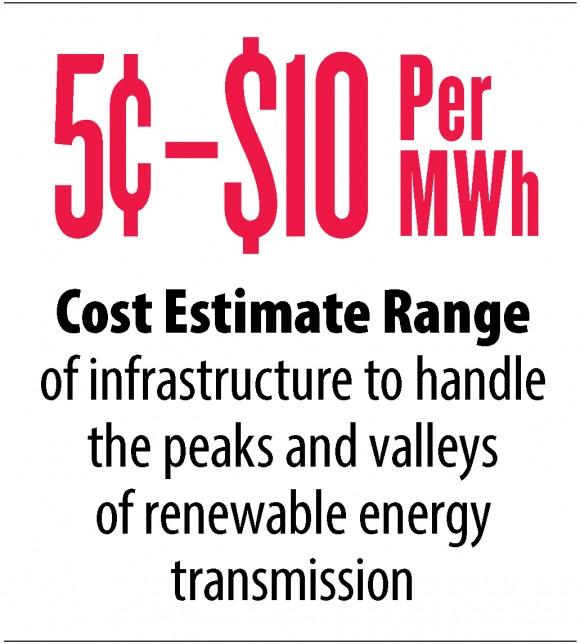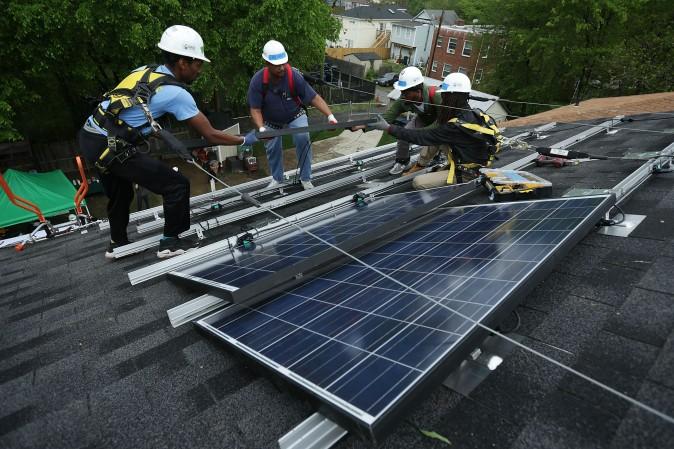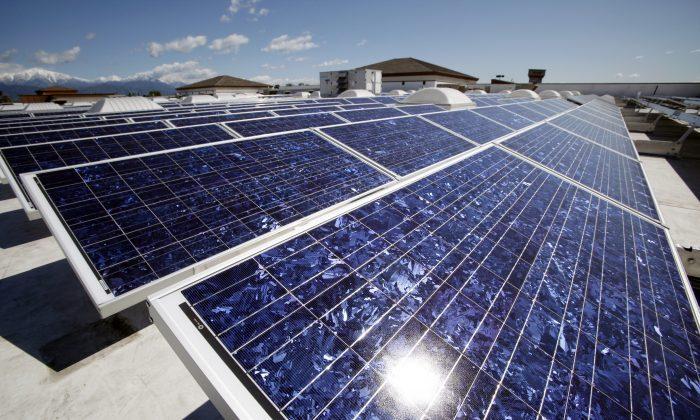When it comes to wind and solar power, there isn’t a straight bottom line—it’s kind of wavy. Figuring out the economic costs and benefits of renewable energy presents challenges not found in the conventional energy sector.
One issue, for example, is that wind and solar have peaks and valleys of productivity, depending on whether or not the sun is shining or the wind is blowing. Building the transmission infrastructure to handle this is among the costs incurred by renewables.
Estimates of that cost range anywhere from $0.05 to $10 per megawatt-hour (MWh), according to Andrew Mills, a researcher at Lawrence Berkeley National Laboratory who led a 2016 study looking at the various planning processes across the country for integrating solar power into grids.
This illustrates how difficult it is to nail down the cost of even a single, physical aspect of setting up renewables. When it comes to trying to calculate the monetary value of more qualitative social and environmental aspects, it’s even trickier.
Economists can make renewable energy look like either an economic boon or a disaster, depending on which factors they decide to include.
And yet, public policy depends on such analyses.
Even a presidential executive order can only proceed if the Office of Management and Budget reviews cost-benefit analyses and determines that the benefits justify the costs.
Ambiguity and Politics

With President-elect Donald Trump’s administration (and particularly Trump’s pick for Environmental Protection Agency (EPA) head, Scott Pruitt) calling for rollbacks on energy-related environmental policies, these cost-benefit analyses may play an important role in the years to come.
“I know there’s going to be an attempt by Pruitt to say, ‘Well, the only reason all these climate change policies are justifiable is that they’re using questionable economic assumptions,’” said Michael Kraft, professor emeritus of political science and public and environmental affairs at the University of Wisconsin–Green Bay.
The social cost of carbon could be the first to get the cut.
Harvard environmental law expert Jody Freeman explained in a post on the university’s website, “A single federal court of appeals has held that all federal agencies must include a social cost of carbon calculation in their cost-benefit assessments; a Trump White House could ignore that ruling as inapplicable nationally.”
The New York Public Service Commission (PSC) includes a social cost in its cost-benefit analyses for renewables.
The commission issued an order early last year that laid out the rules for all future cost-benefit analyses for renewables. The 100-plus-page order describes the debate among commentators concerning the factors, showing how each is open to various interpretations.

One of the commentators, referred to in the order as the “Joint Utilities” (which includes Consolidated Edison Company of New York and other utilities), suggested that the analyses should not include environmental and other non-energy benefits.
Only after a project has passed a purely financial cost-benefit analysis, the Joint Utilities said, should these other aspects be considered. The analyses should maintain “a level playing field” for renewables and fossil fuels.
The commission rejected this suggestion, saying that it has decided to intentionally favor renewables in its cost-benefit analyses.
It relies heavily on the social costs of carbon (SCC) set by the EPA. The EPA determines a dollar-value for damages it estimates will be caused by climate change, including damages to human health and agriculture. The commission’s framework also takes into consideration the price of regional carbon credits created by a program called the Regional Greenhouse Gas Initiative, which is a collaboration between New York and eight other states.
States that are part of the RGGI set a joint limit for carbon emissions from electricity generation. They require each major electrical power plant to have one credit per ton of carbon dioxide they produce. Plants that use less than their quota can sell their credits, and plants that use more than their quota can buy them.
Other Financial Factors

Even setting aside the social costs, some other, more purely financial factors are often open to debate.
Jim Lazar, a senior adviser at the energy think tank Regulatory Assistance Project, has analyzed multiple studies across the United States on the value of solar. He said that many utilities only look at a few factors, like distribution and operating costs.
But a more comprehensive analysis should include other factors, such as fuel supply risk, Lazar said.
He explained: “Right now fuel prices are pretty low. They can’t go much lower, but they can go a lot higher. ... There’s more risk of them going up than going down.” But solar power doesn’t include this kind of risk. Its price is dropping and its price also isn’t as volatile as fossil fuel prices.
Utilities don’t count this, Lazar said, because they pass on any variance in fuel prices to the customer. But including fuel risk in a cost-benefit analysis is important to the ratepayer. So, Lazar said, good public policy should make sure its cost-benefit analyses of renewables include this.
Another often disagreed-upon factor is how subsidies are treated in analyses.
New York’s PSC decided to treat the federal Production Tax Credit (PTC) for renewable energy as only a benefit, not a cost. In other words, it doesn’t consider this taxpayer money as an expense.
“A wind power project can usually earn money with power market prices as low as negative $35 per MWh,” wrote economist Michael Giberson, associate professor at Texas Tech University, in his 2013 study, “Assessing Wind Power Cost Estimates.”
“This means that wind facilities can afford to pay the electrical grid to take their power as long as they are able to collect the PTC,” he continued.
Economist Tyler McNeal, who has studied cost-benefit analyses of wind power, said, “We have to remember that economic models are akin to maps: useful for seeing where to go. But clearly there’s a difference between a map of Yellowstone and hiking through it.”
With renewables in particular, we’re heading into uncharted territory.
Larry Sherwood, president and CEO of Interstate Renewable Energy Council, said: “It becomes more difficult to project for the future, because you can’t just put in a model of what happened in the past and figure out what’s going to happen in the future. It’s reasonable or expected that different people have widely varying models of what’s going to happen 10 or 20 years from now.”
McNeal suggested policymakers consider a broad spectrum of cost-benefit analyses, considering carefully which factors are included or excluded in each.
Case Studies
Underestimating the Economic Value of Solar

One economic benefit of solar that is almost never included in cost-benefit analyses is the energy it helps save in air conditioning, Lazar said.
The roof is shaded by solar panels, dramatically decreasing the temperature inside a building. Lazar learned the extent of this benefit from a hotel in Hawaii. The hotel had calculated its usual energy needs and installed enough solar panels to meet these needs.
But it surprisingly ended up with 20 percent more than it needed. This was due to cooler temperatures in the hotel, leading to less use of air conditioning.
“For every kWh [of solar energy] produced, there’s three-tenths of a kWh of air-conditioning saved,” Lazar said.
Subsidies Made All the Difference in the Value of Wind
McNeal, who analyzed the cost-benefit analyses of wind power in Minnesota as a fellow at the think tank Center of the American Experiment, found that the Southern Minnesota Municipal Power Agency lost more than $14.5 million in one year through its wind power.
The wind is strongest in Minnesota during the spring and fall, and at night, when energy demand is lowest. The generated power thus wasn’t worth much to the utility. But it was buying it for a relatively high price under obligation of a power purchase agreement (PPA). PPAs are often signed for wind power and last for more than a decade, because it encourages people to build wind-farms if they are guaranteed to make money on them.
The federal tax credit for renewables made this possible. McNeal explained that the utility knew it was going to lose money, but that the subsidies would compensate the loss.





